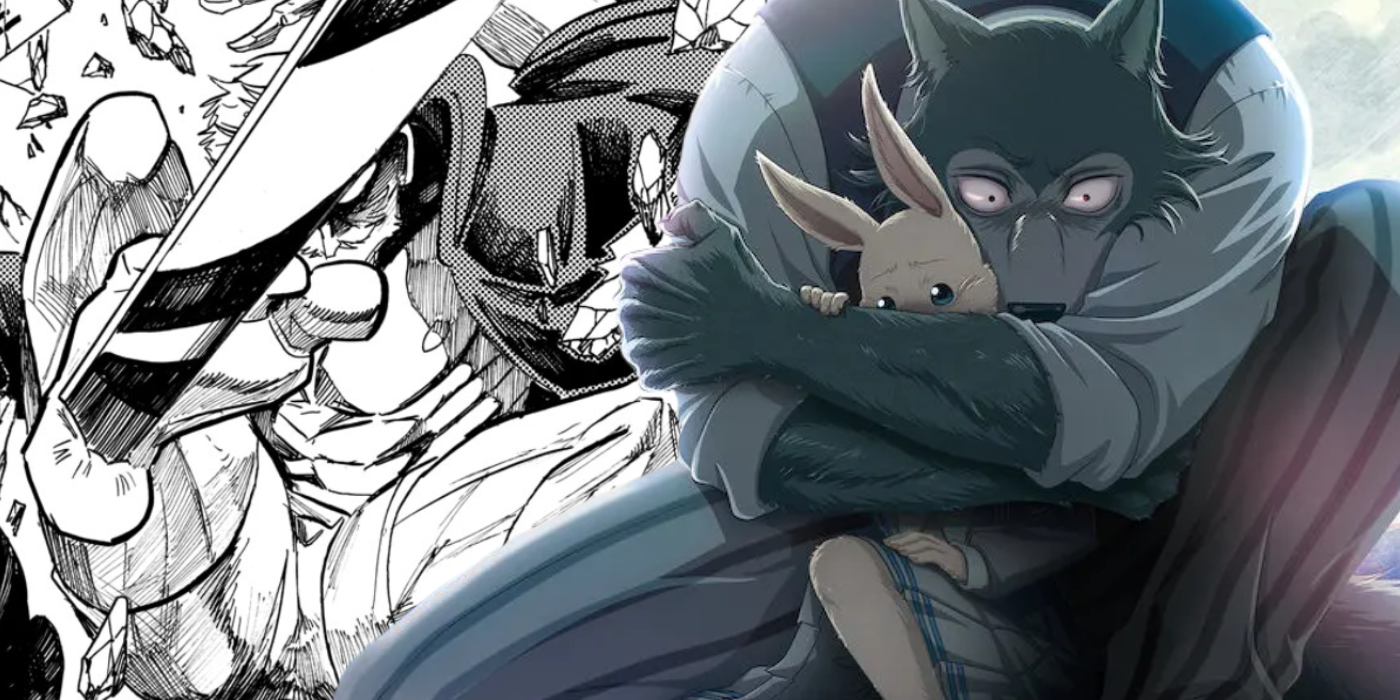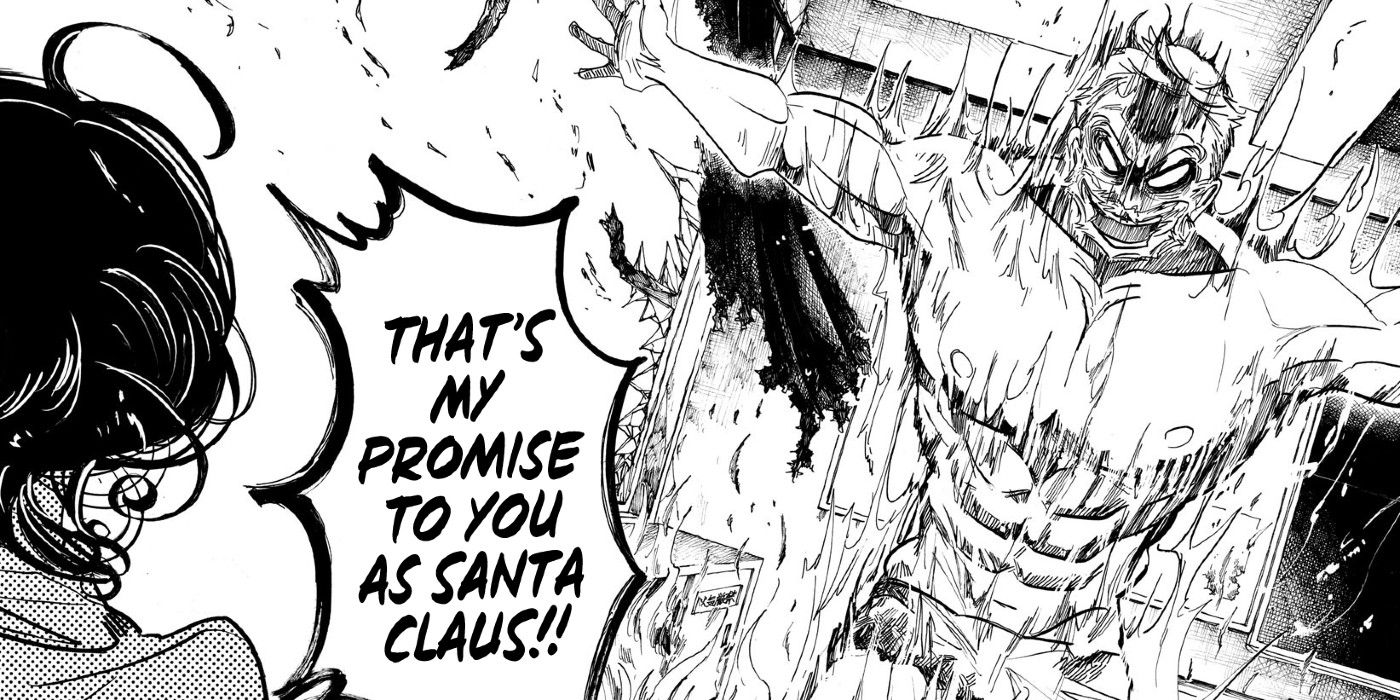Mangaka Itagaki Paru has finally started writing a new manga called Sanda, a follow-up to her critically acclaimed Beastars manga series - and it couldn't be any more different.
Instead of a story about a herbivore and carnivore attempting a seemingly impossible relationship in a world where animals are increasingly more divided by what they eat and their temperaments, Sanda stars a boy descended from Santa Clause who can transform into jolly Old Saint Nick. Although there are major divergences between both series, Itagaki Paru does touch on some of the same, highly celebrated concepts in Sanda that garnered Beastars its well-deserved high praise.
How Sanda manifests as Santa Claus is not like the stereotypical Kris Kringle. He's muscular with much different facial hair. As of chapter 6, Sanda can cause skis to tear out of his feet for fighting purposes similar to how Wolverine uses his retractable claws against enemies and he's impervious to fire, allowing him to survive massive explosions. Throughout the first six chapters, Sanda comes to leverage his warrior-esque physique to save children (and classmates) from terrifyingly obsessive adults. Driving adults' unsettling behavior is that children are, for an undisclosed reason, scarce, to the point where children are cherished and protected to an absurd degree in specialized schools. Some can even literally get away with murder without having to lift a finger to protect themselves. But if their youthfulness is in anyway put at risk by, for example, experiencing trauma (most likely because it could age them) they are subjected to punishments that are terrifying enough to strike unadulterated fear in them should they be threatened with being punished.
In what might be related to this world's mysterious decline in children, it is now an odd occurrence for it to snow in winter. So Christmas is no longer celebrated, and by extension, Santa Claus. This might be why a curse is placed on Sanda that prevents him from knowing his true identity as Santa Claus' offspring and his ability to transform into him. His classmate, however, Fuyumura lifts the curse so he can help her solve the disappearance of her friend since Santa naturally must do everything to help grant the wish of children, even pretend that he's a terrorist who's planted a bomb in a school (long story). The two soon get entangled with another student who compels Sanda to help his parent's bakery, which is suffering because no one celebrates Christmas.
How Sanda correlates with Beastars derives from the concept of taboo love, which Mangaka Itagaki Paru now delivers in a way that's disturbing to readers in the same manner as to how herbivore and carnivore relationships upset many of the characters in Beastars. Upon transforming into Santa Claus, Sanda's appearance not only changes but also his perception of life, which he now sees from the perspective of an adult. Even when he reverts back to his normal form, Sanda is enamored by the childlike wonder and innocence exhibited by his friends just like one would who's lost these characteristics over time. Sanda also wrestles with disturbing emotions that stem from his severe crush on Fuyumura (to the point where getting stabbed by her doesn't bother him as much as it should). Now a part of him views her as a child and is burdened by the fact that Santa can't and would never act on such urges as a normal teenage boy would. Although currently a minor plot point, Sanda's understandable difficulty contending with his feelings for a girl when he can transform into a man is similar to the challenge of being a carnivore who loves an herbivore.


